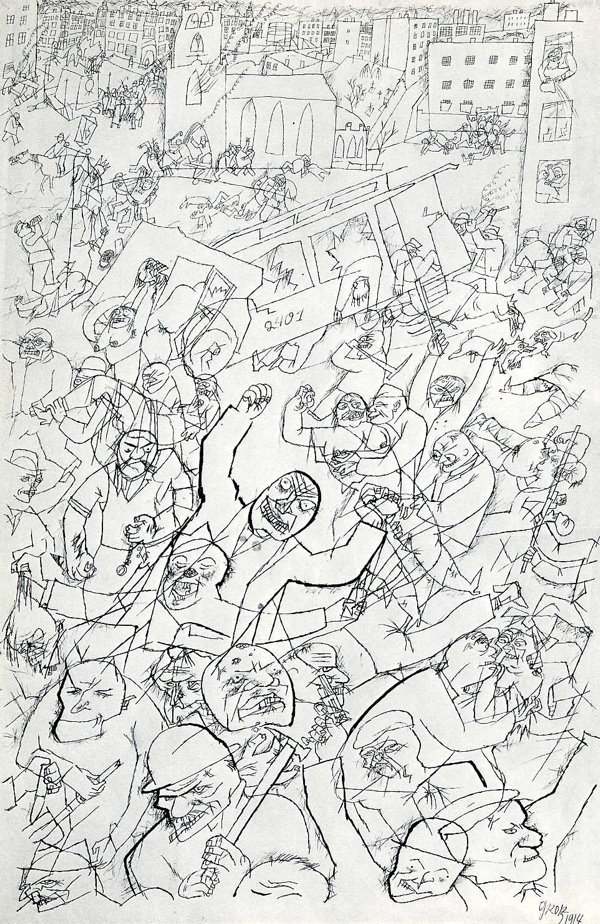Ryan Vu sends along a link from Dennis Cooper's blog, The Weaklings, about facial prosthesis in WWI, a topic that Bitter Laughter broached early in its life. This post has a number of nice images, but I should warn you that they are a bit gory. To the right is an Otto Dix painting showing a facial injury.
The officers had a hard time explaining the concept of a machine gun or the power of an artillery shell to young soldiers who hadn't seen them. A soldier might stick his head out quickly to peek over the trench wall and get his nose shot off, or his chin or his cheek or his eyes and so on. This was a common occurrence on the front. Doctors had no idea how to deal with this swell of facial injuries.Part of what fascinates me about the facial prosthesis of the "Great" War is that it is in some ways the most extreme and spectacular form of prosthesis that proliferated after the war. I think it's hard to recover just how mended the streets of Europe looked in the mid 1920s--how many people would have donned crutches, fake arms, etc. But what's really striking about the facial prosthesis is that it is a cipher of the insane distance that science created between technologies of destruction and technologies of reconstruction. WWI inaugurated the century of technology and technological warfare, and the facial prosthesis that followed the war is a sign of just how gruesome this war was. And since we tend to think of World Wars through one of two images--mushroom clouds or gas chambers--the image of the reconstructed face is a reminder of all those figures that physically survived into the century, carrying the wounds of Continent on their bodies.
These soldiers were called "The Men with Broken Faces" or "gueules cassées". There were so many of them during and after the war that in some combatant countries, a number of benches were painted blue indicating that the man sitting there would be distressing to look at. They endured total social isolation and alienation. Their faces were taken away from them and transformed on the battlefield to resemble the mud-churned pits of the trenches themselves. These men were the quintessential social pariahs of the day, not only for their specific disfigurement, but because their faces directly embodied the horrors of war and quite literally bore the inescapable reality of what we are capable of doing to each other. They often only found solace in each other and gave up any hope of leading a normal life. A unique brotherhood was formed where they pressed for their right to have underground social places of their own where they could be together without frightening the general public. Some of the veterans even took their families and started their own small communities far away from general society.



No comments:
Post a Comment